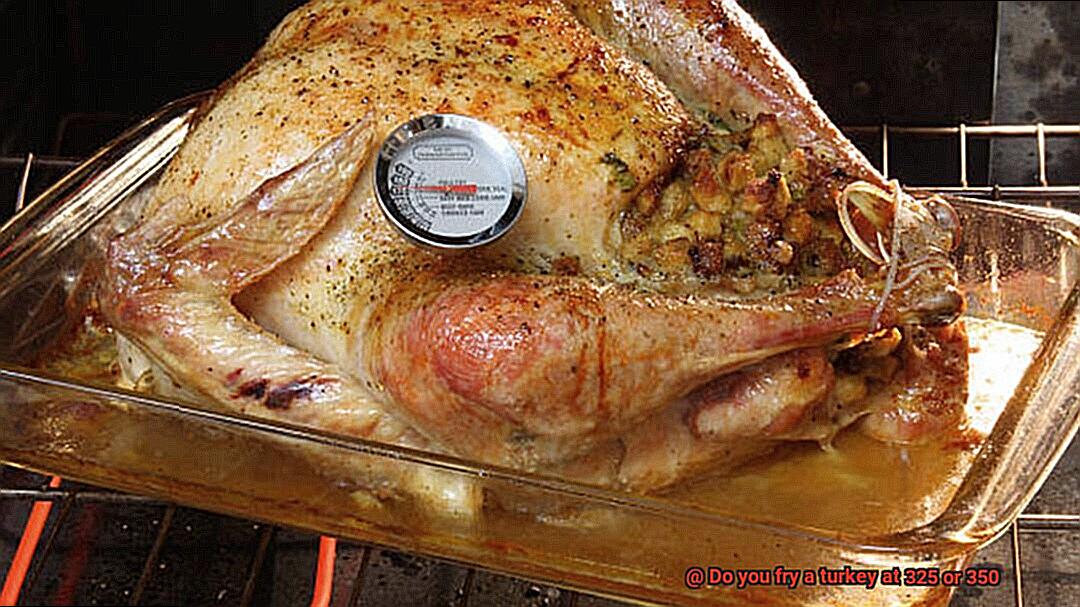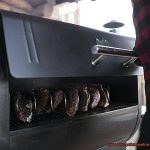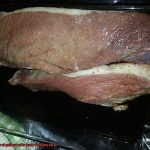It’s that time of year again – the leaves have fallen, the air is crisp, and the aroma of roasted turkey wafts through homes all across the country. But if you’re a true turkey aficionado, you know that there are many ways to cook a bird. Have you ever considered frying it? Frying can result in a juicy, crispy, and flavorful turkey that will have your guests begging for more.
Before you start heating up your fryer, there’s one question on everyone’s mind: do you fry a turkey at 325 or 350 degrees Fahrenheit? The debate over optimal cooking temperature has been raging in kitchens for years with die-hard fans on both sides of the argument.
In this blog post, we’ll explore why some people swear by cooking their turkey at 325°F while others prefer 350°F. We’ll delve into the science behind cooking times, oil temperatures, and internal temperatures so that you can make an informed decision about which method works best for you.
Whether you’re a seasoned turkey fryer or a first-time fryer, this guide will help ensure your bird comes out perfectly cooked every time. So grab your notepad and get ready to learn something new. By the end of this article, you’ll be ready to tackle your fryer with confidence and impress your loved ones with your newfound knowledge.
Contents
Factors to Consider When Deciding on the Ideal Temperature for Frying a Turkey
Frying a turkey can be a culinary adventure, but the decision of selecting the ideal temperature can be a daunting task. Whether it’s 325 or 350 degrees Fahrenheit, choosing the right temperature is not always straightforward. However, it comes down to several factors that play an essential role in ensuring that your turkey is delicious and safe.
The size of the turkey is one of the most critical factors to consider when determining the optimal frying temperature. A larger bird requires a lower cooking temperature to ensure that it cooks evenly throughout. Frying turkeys that weigh over 14 pounds at 325 degrees Fahrenheit is recommended, while smaller turkeys weighing less than 14 pounds can be fried at 350 degrees Fahrenheit.
Another crucial factor to consider is the type of oil used for frying. Different oils have varying smoke points, which refers to the temperature at which they start to break down and produce smoke, creating a burnt taste and releasing harmful fumes. For example, peanut oil has a high smoke point and can be heated to temperatures as high as 450 degrees Fahrenheit without breaking down. In contrast, oils such as olive oil and butter have lower smoke points and should not be used for frying at high temperatures.
Personal preference is also a factor in determining the ideal frying temperature. Some people prefer a higher temperature of 350 degrees Fahrenheit because it results in a crispier skin and shorter cooking time, while others prefer a lower temperature of 325 degrees Fahrenheit because it allows for more even cooking throughout the bird.
It’s crucial to monitor both the temperature of the oil and the internal temperature of the bird regardless of your preference. Using a meat thermometer to check that the thickest part of the turkey reaches an internal temperature of 165 degrees Fahrenheit before removing it from the fryer ensures safety.
The Benefits of Using 325 Degrees Fahrenheit
While some swear by 350 degrees Fahrenheit, we’re here to share the benefits of using 325 degrees Fahrenheit for your next culinary adventure.
First and foremost, cooking your turkey at 325 degrees Fahrenheit can prevent overcooking or burning on the outside while remaining raw on the inside. This lower temperature allows for a slow and even cooking process, resulting in a juicy and tender bird that’s sure to impress your guests.
But that’s not all – cooking at 325 degrees Fahrenheit can also reduce the risk of oil spattering and splashing, which can be dangerous and messy. By cooking at a lower temperature, you can avoid this issue and ensure a safe and enjoyable frying experience.
And let’s talk about flavor. Cooking at 325 degrees Fahrenheit allows your seasonings and spices to penetrate deeper into the meat, resulting in a more rich and savory taste. Your taste buds will thank you.
To sum it up, using 325 degrees Fahrenheit for frying your turkey has numerous benefits, including:

- Juicier and tender meat
- Reduced risk of accidents
- More flavorful bird
The Benefits of Using 350 Degrees Fahrenheit
When it comes to frying turkey, the perfect temperature can make all the difference. While 325 degrees Fahrenheit is a common temperature to cook turkey, there are some real benefits to using 350 degrees Fahrenheit instead.
Firstly, let’s talk about that delicious crispy skin. If you’re someone who loves the texture of golden-brown, crunchy skin on your turkey, then cooking at 350 degrees Fahrenheit is the way to go. This higher temperature allows for better browning, giving you that perfect crunch when biting into it.
Not only does cooking at 350 degrees Fahrenheit result in crispy skin, but it can also reduce cooking time by about 10-15 minutes. That means more time for you to spend with your loved ones on Thanksgiving day. Cooking at a lower temperature can take longer for your turkey to cook through and reach the appropriate internal temperature.
Lastly, using a higher temperature can help prevent oil absorption, resulting in a lighter and less greasy end product. When cooked at a lower temperature, the turkey may absorb more oil than necessary. However, using 350 degrees Fahrenheit can help reduce oil absorption and result in a healthier and tastier final product.
What About Larger Turkeys or Commercial-Grade Fryers?
Frying a turkey is an excellent way to impress your guests with a mouth-watering main dish. But what about those larger turkeys or commercial-grade fryers? Worry not, we’re here to guide you through it.
Firstly, it’s crucial to know that larger turkeys need a little more care when it comes to temperature and cooking time. We recommend frying them at 325°F for 3-4 minutes per pound instead of the standard 350°F for smaller turkeys. This ensures that your turkey is fully cooked without burning the skin.
When it comes to commercial-grade fryers, they are designed to handle more significant quantities of food. Therefore, the temperature and cooking time may need adjusting. Always refer to the manufacturer’s instructions for specific guidelines on temperature and cooking time.
It’s also vital to consider the size of the fryer when frying a larger turkey. Using a fryer that accommodates at least 20 pounds of turkey is ideal for larger birds, preventing overflow or safety hazards.
Tips for Monitoring the Oil Temperature and Internal Temperature of the Bird
Deep-frying a turkey can be a fun and delicious way to celebrate special occasions or holidays. However, it’s important to know how to monitor the oil temperature and internal temperature of the bird to ensure that it’s cooked safely and thoroughly without any risk of foodborne illnesses. Here are some tips for monitoring both temperatures:
Maintaining the Oil Temperature
The oil temperature should be between 325°F and 350°F during the frying process. This range allows the turkey to cook evenly without burning the skin or leaving it undercooked. To monitor the oil temperature, use a thermometer designed for deep-frying. Clip the thermometer onto the side of your fryer before heating up the oil, making sure that the tip is submerged in the oil but not touching the bottom of the pot. Keep an eye on the thermometer until it reaches your desired temperature range. Remember to adjust the heat as needed throughout the cooking process to maintain a consistent oil temperature.
Checking the Internal Temperature
The internal temperature of the turkey should reach 165°F in all parts of the bird, including the thickest part of the breast and thigh. Use a meat thermometer to check the internal temperature by inserting it into the thickest part of the turkey without touching any bones. This should be done after about an hour of cooking time or when you think your turkey is nearing completion.
Removing from Heat and Resting
Once your turkey has reached an internal temperature of 160°F-165°F, remove it from the fryer and let it rest for at least 20 minutes before carving it. This resting time allows for even distribution of juices throughout the meat, resulting in a juicy and flavorful turkey.
Preventing Overcooking or Undercooking
To avoid overcooking or undercooking, it’s important to keep checking both temperatures throughout the cooking process. The oil temperature will fluctuate as you add and remove the turkey from the fryer, so make sure to adjust the heat as necessary. Don’t be afraid to use your meat thermometer frequently throughout cooking to ensure that your bird is fully cooked and safe to eat.
How to Ensure Even Cooking Without Burning or Undercooking the Turkey
Frying a turkey can be a showstopper at any holiday gathering or special occasion. However, it can be daunting to ensure that the turkey cooks evenly without burning or undercooking it. Fear not, with a few simple steps, you can fry the perfect turkey every time.
Choose the Right Temperature
The first step to frying a turkey evenly is to choose the right temperature. Most experts recommend 325 degrees Fahrenheit as a safe bet for most home cooks. However, some suggest 350 degrees Fahrenheit depending on factors such as the size of the bird and the type of fryer used. Regardless of the temperature chosen, it is crucial to maintain a consistent heat throughout the frying process to prevent uneven cooking.
Prepare the Turkey Properly
Proper preparation is key to ensuring that the turkey fries evenly. Thaw the bird completely and pat it dry with paper towels to remove any excess moisture. Season the turkey with salt and other desired spices before frying to enhance its flavor. Be sure to stuff any cavity with aromatics such as onions, garlic, and fresh herbs to add extra flavor.
Monitor Closely
To prevent burning or undercooking, it is essential to monitor the turkey closely throughout the frying process. Use a meat thermometer to check the internal temperature regularly. Once it reaches 165 degrees Fahrenheit, it’s safe to eat and can be removed from the fryer. Keep an eye on the color of the turkey as it fries; if it starts to turn dark brown too quickly, lower the heat slightly to prevent burning. If you notice that the skin isn’t browning evenly, you may need to increase the heat slightly to promote even cooking.
Maintain Consistent Heat
Consistent heat is also crucial for even cooking. Fluctuations in temperature can cause uneven cooking and result in an overcooked or burnt turkey. Use a high-quality fryer with a reliable thermostat and make sure not to overcrowd the pot with too much oil and turkey to maintain consistent heat throughout the frying process.
Rest Before Carving
Finally, allow the turkey to rest for at least 15 minutes before carving. This allows any residual heat to distribute evenly throughout the meat, resulting in a more tender and flavorful final product. Resting also allows time for the juices to redistribute, making the turkey more moist and delicious.
How to Avoid Greasy or Tough Meat
Frying a turkey can be a mouthwatering way to enjoy your Thanksgiving meal. But, achieving the perfect texture and taste is crucial to ensure that every bite is as delectable as the last. Here are five essential tips to avoid greasy or tough meat when frying your turkey.
Dry Your Turkey Thoroughly
The first step in ensuring a crispy exterior is to dry your turkey thoroughly. Make sure it is completely thawed and free from any excess moisture before frying. Any lingering moisture on the turkey will cause the oil to splatter and create a greasy exterior. Use paper towels to pat the turkey dry inside and out.
Use High-Quality Oil
Choosing the right type of oil is key to achieving a non-greasy result. High-quality oils like peanut or canola oil have high smoke points which prevent the oil from breaking down and creating a greasy taste. Ensure that there’s enough oil in your fryer to cover the turkey, without overflowing.
Monitor Temperature Carefully
Maintaining the correct temperature while cooking is crucial to avoid greasy or tough meat. It’s recommended to fry your turkey at temperatures between 325-350°F for even cooking without overcooking the outside of the turkey. An incorrect temperature can lead to an unpleasant texture, making the meat too oily or tough.
Season Your Turkey
Spices can add a lot of flavor and enhance tenderness to your turkey after frying. Dry rubs like salt, pepper, garlic powder, or other spices are great for seasoning your bird before frying it. This step will enhance its flavor and prevent it from becoming tough after frying.
Check for Doneness
To ensure that your turkey is perfectly cooked, use a meat thermometer to check for doneness. The internal temperature of the thickest part of the turkey should reach 165 degrees Fahrenheit before removing it from the fryer. After frying, let the turkey rest for around 15 minutes to redistribute juices and ensure a tender and juicy end result.
KEvIRYX4Dj4″ >
Conclusion
In conclusion, frying a turkey is not only a delicious way to serve up a holiday meal but also an exciting experience for any home cook. When it comes to selecting the ideal temperature for frying, there are several factors that come into play. The size of your bird, the type of oil used, and your personal preferences all contribute to determining the optimal temperature.
While some may prefer cooking their turkey at 350°F for a crispy skin and shorter cooking time, others swear by 325°F for juicier and more tender meat. Regardless of your preference, safety should always be top of mind when frying a turkey. Monitoring both the oil temperature and internal temperature of the bird is crucial for achieving perfect results.
By following our expert tips on maintaining consistent heat, properly preparing your turkey, monitoring closely throughout the cooking process, resting before carving, and avoiding greasy or tough meat, you can ensure that your fried turkey will be a showstopper at any gathering.
So why not take a chance this year? Grab your fryer and experiment with different temperatures to find what works best for you. With these guidelines in mind, you’ll be sure to impress your loved ones with a mouth-watering main dish that they won’t forget anytime soon.






